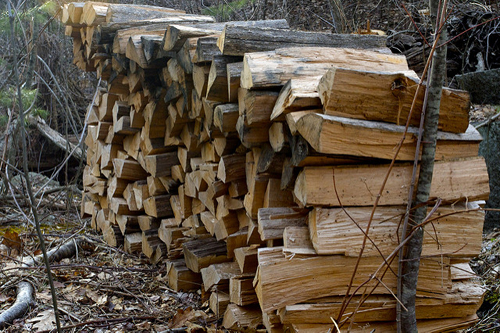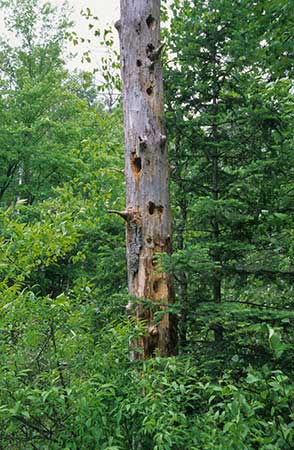
Firewood: Wanted Dead or Alive?
Firewood does more for Doug and Laurie than heat their house all winter. “I’m not cutting firewood, just to cut firewood,” asserts Doug. “There is usually some other benefit like opening a trail or advancing forestry.”

Doug Lloyd and his wife Laurie Derse own and manage 320 acres in northern Iowa County that has been in the family since 1962. Their relationship to the land runs deep. His parents’ ashes are literally “pushing up daisies” on the bluff top prairie.
The couple nurtures the woods, savanna, and prairies – often through firewood-making – delighting in the land’s changes, growth and maturity.
To cut or not to cut?
As firewood goes, dead trees get all the attention. Nathan Stanford, a chainsaw safety instructor, can vouch for that.
“Landowners come to my classes because they cut up all the downed wood on their property and want to start dropping dead trees,” he says. Doug cuts dead trees, too, but knows that the real power of a chainsaw is in what tree you decide to cut.
While dead or downed trees make great firewood, leaving some in the woods can be a big help to wildlife. Standing dead trees, or snags, are valuable to wildlife as bird perches, nesting cavities, and places to forage for food underneath the loose, rotting bark.
Barred owls and pileated woodpeckers utilize large dead trees, while black-capped chickadees and downy woodpeckers use smaller dead trees and branches. Amphibians, such as wood frogs, four-toed salamanders, and red-backed salamanders, use the cool, moist spots under downed trees as shelter and forage areas.
Doug often focuses firewood-making in his prairies, savannas, and oak management areas; habitats that benefit from more light on the ground.
“As I like to say, a dead tree casts no shadow.” In other words, leaving the dead tree and cutting a live one puts more light on the ground, moving him closer to his habitat goals. For just this reason, he burns a lot of elm, cherry, and hickory. Similarly, removing ironwood is a common improvement to woodlands and great firewood.
While firewood from dead trees is ready to burn sooner, green firewood may be ready sooner than you think. A Forest Products Laboratory study found that green firewood drying by April 1 will be ready to burn by October of that same year.
So next time you’re in the woods, consider the power of a chainsaw in your hands. With one cut you can make firewood, create habitat, and reserve dead wood for critters.
